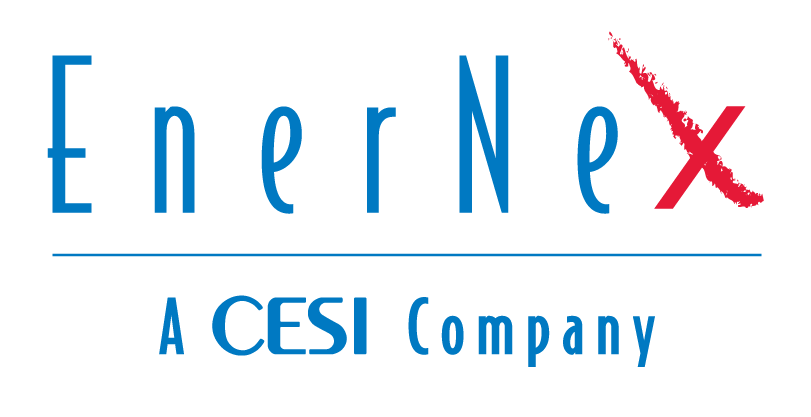 California Utilities Define New Smart Inverter Capabilities
California Utilities Define New Smart Inverter Capabilities
Originally published in the IEEE Smart Grid June 2019 Newsletter

Kay Stefferud, Director of Implementation Services
kay@enernex.com
865-770-4867
California’s phased implementation of smart inverter functionality addresses power quality issues including issues caused by independent and intermittent renewable energy sources. Recommendations from California’s Smart Inverter Working Group (SIWG) enable smart inverters to improve power quality. Inverters can be harnessed to improve power quality including rapidly changing production caused by clouds moving over solar PV sites. Previously per IEEE 1547, inverters were required to disconnect from the grid when power quality issues arose. Recent changes in IEEE 1547-2018 and the corresponding aligned state interconnection requirements now require smart inverters to sense grid conditions and respond accordingly. Smart inverters can positively impact the utility grid, or at the minimum leave the grid unaffected. Smart inverters are also capable of receiving signals from the utility to support the utility’s distribution system.
Phase 1 Functions
- Anti-Islanding Protection
- Low and High Voltage Ride-Through
- Low and High Frequency Ride-Through
- Dynamic Volt-Var Operation
- Ramp Rates
- Fixed Power Factor
- Soft Start Reconnection
Phase 2 Recommendations
- Smart inverters communicate with the utility through:
- Direct DER Communications – individual DER systems linked directly to the utility.
- Aggregator Mediated Communications – approved third parties that combine multiple DER systems
Phase 3 Functions
- Monitor Key DER Data
- DER Disconnect and Reconnect Command (Cease to Energize and Return to Service)
- Limit Maximum Active Power Mode
- Set Active Power Mode
- Frequency Watt Mode
- Volt Watt Mode
- Dynamic Reactive Support
- Scheduling Power Values and Modes
Previous standards required inverters to disconnect from the grid when system disturbances caused voltage and frequency to go outside of a specified band. The subsequent abrupt net demand change can be problematic on circuits with large amounts of inverter-enabled distributed generation. Phase 1 capabilities such as low/high voltage ride-through and low/high frequency ride-through instruct smart inverters to continue generating despite momentary/temporary voltage and frequency fluctuations.
With the Phase 3 Frequency-Watt function, generators with smart inverters are required to adjust active power generation as a function of frequency. Normal frequency operation is from 59.964 Hz to 60.036 Hz (within +/- 0.036 from 60Hz). During normal operation, smart inverters are not required to decrease or increase active power production. When the frequency goes over 60.036Hz, smart inverters are required to reduce active power at a rate of 50% of real power nameplate rating per Hz. As active power injection is beneficial at lower band frequencies, smart inverters can increase active power production by 50% of real power nameplate rating per Hz when possible. Similar to the Frequency-Watt settings, active power generation will also be adjusted as a function of voltage at the inverter terminal or the Point of Common Coupling (PCC). Active power adjustment is relative to the export of active power to the grid, and not the smart inverter’s overall active power production. Effectively, there is no limit on customer generation if they are using all the power generated. Active power production will be reduced by 25% of the active power nameplate per 1% of nominal voltage when the measured voltage is greater than 106% of the nominal voltage. Cut-off of generation occurs at 110% of nominal voltage, and the smart inverter reduces generation to 0 W.
Using dynamic volt-var operation, smart inverters are permitted to operate within a range of power factor values to provide reactive power support. Smart inverters respond to grid conditions and provide reactive support within the acceptable range of power factor values. Fixed power factor entails providing a power factor setting to smart inverters based on identified reactive power needs on a circuit.
Phase 2 recommendations guide utilities on communications with smart inverters. Communications enable utilities to send commands to smart inverters, including signals that can positively impact power quality. Utilities should be able to communicate directly with individual smart inverters, through Facility DER Energy Management Systems (FDERMS), and through Retail Energy Providers/Aggregators/Fleet Operators. Commands sent by utilities to smart inverters can enhance power quality. The commands can be particularly beneficial during grid distress periods. Commands identified by the SIWG include: “Cease to energize control command,” “Return to service control command,” “Limit active power command,” “Set active power level mode function,” and “Suspension of active power restriction.”
The “Monitor Key DER Data” function communicates performance information (smart inverter production or consumption of active and reactive power, phase voltages, and frequency) and operational state information (in-service or not in-service). The performance and operational state information provided by smart inverters enhances the utility’s situational awareness.
California’s smart inverter functions can address power quality concerns as described above. We will continue to follow the activities of the California Public Utilities Commission, SIWG, and utilities on power quality applications of smart inverters.

